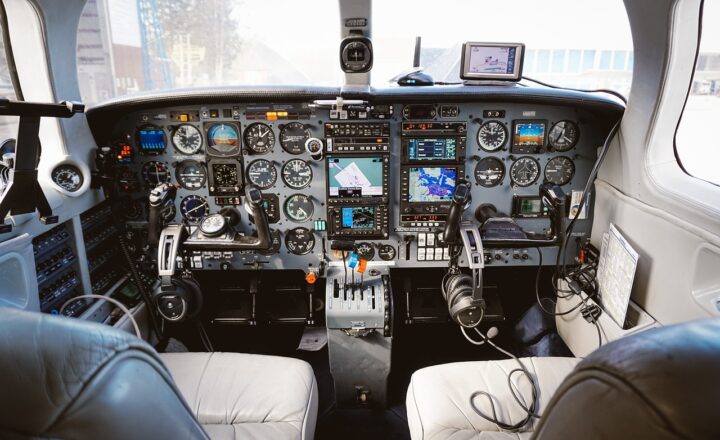The Secret Techniques That Make Fighter Pilots Able to Withstand High G-Forces
November 11, 2024

Fighter pilots are often seen as the epitome of human endurance and capability, soaring through the skies at remarkable speeds while executing complex maneuvers that subject their bodies to extreme forces. One of the most formidable challenges they face is managing high G-forces, which can lead to significant physical strain and even loss of consciousness. So, how do these skilled aviators cope with such demanding conditions?
In this article, we delve into the secret techniques and training regimens that enable fighter pilots to withstand high G-forces, explore the physiological effects of G-forces on the human body, and discuss some innovative technologies designed to support pilots in their high-speed pursuits.
1. Understanding G-Forces and Their Effects
G-forces represent the acceleration forces experienced by an object, and they can vary depending on the maneuver a pilot conducts in the air. In aviation, G-forces are measured in multiples of gravity (1 G = the force of Earth’s gravity). Fighter pilots often experience forces between 5G and 9G during extreme turns and aerial combat situations.
The body’s response to high G-forces includes:
- Increased Blood Pressure: As G-forces increase, blood is pulled away from the brain and upper body, leading to potential blackout conditions as the brain becomes deprived of oxygen-rich blood.
- Physical Strain on Muscles and Joints: The core and leg muscles work overtime to stabilize the body and maintain control of the aircraft, causing fatigue and strain.
- Vision Impairment: Pilots may experience greyout (loss of color vision) or blackout (loss of consciousness) due to high G-forces affecting blood flow to the eyes and brain.
2. Techniques to Withstand G-Forces
To combat the adverse effects of high G-forces, fighter pilots employ a variety of techniques related to physical fitness, mental conditioning, and specialized equipment:
a. Physical Conditioning
Physical fitness is essential for pilots to endure the demands of high G-forces. Regular strength training, cardiovascular workouts, and flexibility routines enable pilots to maintain overall fitness and stamina. Key exercises include:
- Core Strength Training: A robust core helps stabilize the body and maintain control during maneuvers. Exercises like planks, sit-ups, and medicine ball workouts enhance core strength.
- Leg Strength Training: Strong leg muscles help support the body against G-forces, particularly during high-speed maneuvers. Squats, lunges, and leg presses build muscle endurance.
- Cardiovascular Endurance: Aerobic exercises, such as running, swimming, and cycling, enhance blood circulation and improve overall cardiovascular health, allowing pilots to withstand G-loads more effectively.
b. Anti-G Suits
Pilots wear specialized G-suits that help counteract the effects of G-forces. These suits are fitted with inflatable bladders that apply pressure to the abdomen and legs, preventing blood from pooling away from the brain during high-speed maneuvers. By maintaining blood flow to the upper body, G-suits significantly reduce the likelihood of blackouts.
c. Breathing Techniques
Proper breathing techniques are crucial for reducing the negative impact of high G-forces. Pilots often practice a technique called “anti-G strain” (AGSM), involving:
- Inhalation during G-loads to brace against the forces.
- Exhalation when the G-load is released to regulate blood flow and oxygen levels.
This helps maintain blood flow to the brain and reduces the risk of losing consciousness.
d. Mental Conditioning and Visualization
Mental resilience plays a vital role in a pilot’s ability to endure and respond to high G-forces. Training programs incorporate techniques such as visualization and mindfulness. Nutrition and hydration are also key components; ensuring optimal brain function can help pilots keep alert and manage stress during high-stakes situations.
3. Advanced Technologies Supporting Fighter Pilots
As aviation technology evolves, so do the systems designed to ensure pilot safety and performance:
- G-Force Monitors: Many modern aircraft are equipped with advanced instrumentation that tracks G-forces in real-time, allowing pilots to adjust maneuvers to stay within safe limits.
- Enhanced Cockpit Designs: Ergonomically designed cockpits help optimize pilot comfort and reduce physical strain during prolonged flights where G-forces fluctuate.
- Performance Monitoring Systems: Wearable technology can track pilots’ heart rates, blood pressure, and other vital signs to assess their physiological responses under high-stress conditions, providing crucial data for further training and safety improvements.
4. Training Programs for Future Fighter Pilots
G-training programs are critical in preparing future generations of fighter pilots to manage high G-forces effectively. These programs include:
- Simulation Training: Advanced flight simulators recreate various flight scenarios. Pilots can safely experience different G-forces while learning to implement anti-G techniques.
- Physiological Training: Young aviators undergo physical assessments to ensure they have the necessary endurance and strength to withstand high G-forces. This includes individualized fitness plans tailored to their needs.
- G-Force Familiarization: Programs may also include exposure to G-force environments through training with fighter aircraft, mentorship from seasoned pilots, and hands-on practice with anti-G maneuvers.
By combining rigorous training, cutting-edge technology, and proven techniques, aspiring pilots can prepare themselves to meet the high demands of aerial combat and performance.
Conclusion
The ability of fighter pilots to withstand high G-forces is a combination of physical training, advanced equipment, and mental conditioning. The techniques they employ—ranging from physical fitness to the use of innovative technologies—ensure they remain in control during the most challenging aerial maneuvers. As technology continues to evolve, it will further enhance pilot resilience against the formidable forces of flight, paving the way for advancements in military aviation and cockpit safety.
Whether you’re an aspiring pilot, an aviation enthusiast, or simply curious about the extraordinary capabilities of these skilled aviators, understanding the science and techniques behind their endurance is a testament to the future of aerospace technology and human resilience.








